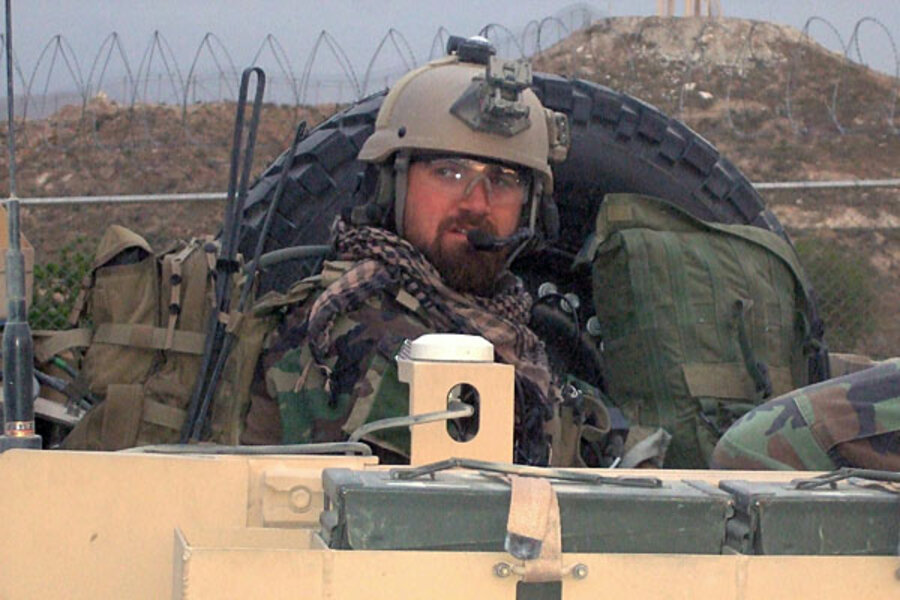How bravery on the ground won controller an Air Force Cross
Loading...
| WASHINGTON
As a barrage of bullets erupted around him during an attack by “well over” 100 enemy snipers and machine gunners, Capt. Barry Crawford Jr., then an Air Force combat air controller assigned to an Army Special Forces unit, watched as his own radio antenna was shot off “mere inches from his face.”
Still, he continued to evacuate Afghan soldiers who had been wounded in battle and provide cover for US Special Operations Forces during a May 2010 helicopter assault in the violent mountainous region east of Kabul.
In the 14-hour-long firefight that ensued, Captain Crawford’s unit was ambushed and pinned down in the open by “multiple enemy fighting positions, some as close as 150 meters [about 500 feet] away” and occupying the high ground.
Crawford was on the ground in the thick of the fight, coordinating air cover and fire between Air Force fighter jets, Apache attack helicopter strikes, and the Army SOF forces positions.
“Without regard for his own life, Captain Crawford moved alone across open terrain in the kill zone to locate and engage enemy positions with his assault rifle while directing” strafe attacks. He also called in fighter jet runs “along with 500- and 2,000-pound bomb and hellfire missile strikes.”
This was the citation for Crawford, who was awarded the Air Force Cross on Tuesday. One of the service’s top military commendations for bravery, it is second only to the Congressional Medal of Honor.
It is only the fifth time the medal has been given since the 9/11 attacks. Crawford, who spent eight years on active duty before joining the Maryland Air National Guard last June, is the third living recipient of the award since America’s decade-long wars in Afghanistan and Iraq began.
The attack began at daybreak, as a team of 100 US Special Operations Forces, along with Afghan troops, began hearing enemy chatter on the radios.
In a village nestled steep in the mountains of Laghman Province, the SOF team was sent in to collect intelligence on a village suspected of being sympathetic to the Taliban.
Meanwhile, enemy forces were dug into defensive positions in anticipation of a sunrise assault on US forces. “They knew we had infilled, but they didn’t know exactly where we were yet,” Crawford told reporters at the Pentagon. “They were just waiting for the sun to come up to initiate their attack.”
US military intelligence, however, had not predicted such a large-scale attack, since “the enemy had suffered so many casualties” during previous operations.
Once the sun came up, however, “It turned into a battle of survival for about the next 14 hours, where every element was under continuous enemy fire from multiple positions," he added. "The enemy was completely around us. They had called in reinforcements and were using the terrain to their advantage.”
The SOF team’s position “required us to ‘run the gauntlet’ of enemy fire no matter where we were in the valley,” he said.
The Special Forces medic took several rounds to his medical bag, destroying some of his medical equipment.
Meanwhile, insurgents were closing in on the location of US forces from all sides. A barrage of sniper fire wounded five Afghan commandos.
The US military estimates that more than 80 insurgents were killed during the day-long firefight, including three high-ranking enemy commanders.
Crawford is currently assigned to the 104th Fighter Squadron, where he is training to be an A-10 pilot in the Maryland Air National Guard’s 175th Fighter Wing.
He said his training saved his life. “That’s why we train like we fight, so when we are put in those situations, we don’t have time to think, because there’s lives on the line,” he added. “You just react. It’s muscle memory.”







